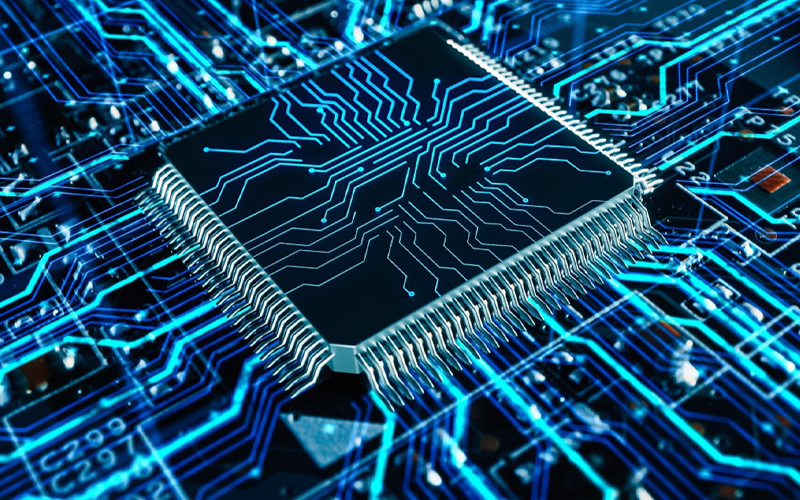The emergence of smart grids has transformed the way electrical power is managed and distributed. While traditional energy grids are designed for one-way distribution of power, from producer to consumer, smart grids utilise Internet of Things (IoT) technology to make each node intelligent. Smart grids integrate three primary components – information technology, operational technology, and advanced metering infrastructure – and the combination enables real-time monitoring, control, and optimisation of energy delivery. The smart grid system is an intelligent system that harnesses real-time information from data gathered through sensors, controls, data communications and software orchestration so that utility companies can make data-driven decisions from the analytic insights.
The smart grid is not a completely new technology, parts of it have been in use for at least three decades as individual solutions to manage different problems. For example, using remote controls in power-generating plants. The modern power infrastructure integrates renewable power into the energy supply mix and that makes the systems more complex.
Benefits and challenges
Smart grids offer numerous benefits such as enhanced efficiency, reliability and sustainability, and lower operational costs and energy consumption. They can detect surges, outages, and wasteful energy losses. On the other hand, smart grids present new challenges, particularly in terms of security. Almost every component of a smart grid is vulnerable to attack and reports of cyberattacks on smart grids have increased in recent times.
Common security threats
Smart grids are vulnerable to a range of cyberattacks that can disrupt power supply, compromise data integrity and threaten public safety.
Some common threats include:
- Malware and ransomware: Malicious software or malware can infiltrate smart grid systems and cause disruptions or lock operators out until a large ransom is paid. Devices and servers can all get infected and once inside, hackers can gain access to sensitive information and manipulate functions of different devices.
Ransoms today are frequently demanded in the form of cryptocurrencies. For instance, WannaCry ransomware. It was a devastating programme that launched a global cyber attack on many large organisations in 2017 causing organisational systems to crash. The infiltrators demanded Bitcoin cryptocurrency as ransom.
The estimated damage caused by global ransomware is expected to reach USD 10 billion by 2027, a huge jump from its valuation of USD 325 million in 2015.
- Phishing attacks: This is a common security challenge. Attackers may use deceptive emails or messages to trick utility employees into revealing sensitive information or login credentials. Further, when customers discard bills and payment receipts carelessly, hackers can procure sensitive information too.
- Eavesdropping and traffic analysis: Attackers can monitor or eavesdrop on network traffic and subsequently gain access to sensitive information. Expansion of smart grids globally is unfortunately creating larger attack surfaces.
- Data tampering: Manipulating data in a smart grid can lead to incorrect energy readings, billing discrepancies, and even damage to equipment.
- Distributed Denial of Service (DDoS): Overloading smart grid communication networks with traffic can cripple their ability to function smoothly. If loss of control lasts for too long, the smart grid will halt operations and cause severe damage. The smart grid connectivity must be secure and reliable to avoid such attacks.
- Insider threats: Employees or contractors with access to smart grid systems may misuse their privileges intentionally or unintentionally. Human error is an unavoidable risk and it requires robust controls in different stages to prevent unauthorised access.
Defence techniques
Securing smart grids requires a multi-layered approach that combines technology, policy, and education. Here are some defence techniques to mitigate the threats listed above:
- Network segmentation: Divide the smart grid network into segments to limit lateral movement for attackers. Each segment should have strict access controls and monitoring arrangements.
- Encryption: Encrypt data both in transit and at rest to protect it from eavesdropping and tampering. Strong encryption protocols are essential for secure communication.
- Access control: Implement stringent access controls and set up least privilege principles. Employees should have access only to the systems and data necessary for their roles.
- Patch management: Keep all software, firmware, and hardware up to date with the latest security patches and updates to eliminate known vulnerabilities.
- Intrusion Detection and Prevention Systems (IDPS): Employ IDPS to monitor network traffic for suspicious behaviour and alert system administrators if potential threats are detected. IDPS are designed to monitor and alert, not block attacks so they must be implemented in combination with other measures.
- User training: Conduct regular security awareness training for employees to recognise and respond to phishing attempts and other social engineering tactics.
- Incident response plan: Develop and regularly test an incident response plan to swiftly address security breaches and minimise their impact.
- Physical security: Secure physical access to critical infrastructure, such as data centres and substations, to prevent unauthorised entry.
- Advanced threat detection: Utilise advanced threat detection solutions, including machine learning and AI, to identify abnormal behaviour patterns indicative of an attack.
- Regulatory compliance: Adhere to industry-specific regulations and standards to ensure compliance and best practices.
As smart grids become more integral to our energy infrastructure, it becomes increasingly important to have robust cybersecurity measures in place. Cyberattacks on smart grids have the potential to disrupt not only people’s lives but also critical services. It is therefore imperative that effective security strategies are implemented and there are continuous efforts to adapt to emerging threats. By combining technical defences and proactive security measures, the resilience of smart grids can be boosted.
* For organizations on the digital transformation journey, agility is key in responding to a rapidly changing technology and business landscape. Now more than ever, it is crucial to deliver and exceed on organizational expectations with a robust digital mindset backed by innovation. Enabling businesses to sense, learn, respond, and evolve like a living organism, will be imperative for business excellence going forward. A comprehensive, yet modular suite of services is doing exactly that. Equipping organizations with intuitive decision-making automatically at scale, actionable insights based on real-time solutions, anytime/anywhere experience, and in-depth data visibility across functions leading to hyper-productivity, Live Enterprise is building connected organizations that are innovating collaboratively for the future.







